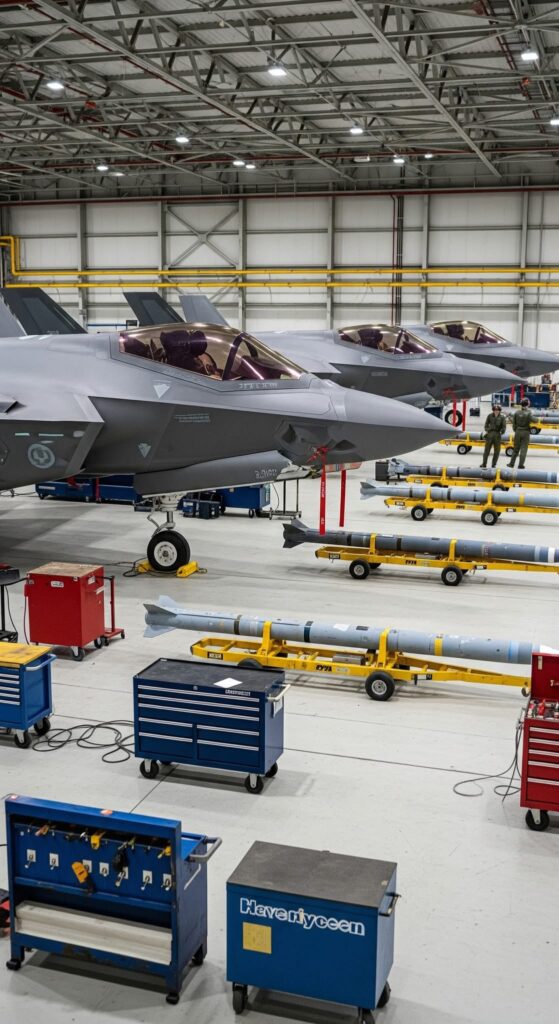
The F-35 Lightning II is one of the most advanced multirole fighter aircraft in the world, designed to serve the air forces and navies of several allied nations. Developed by Lockheed Martin, the F-35 program represents decades of research, engineering, and collaboration between the United States and partner countries. Its purpose is to provide superior capabilities in air-to-air combat, air-to-ground strikes, intelligence gathering, and electronic warfare, all within a single platform.
The aircraft comes in three main variants. The F-35A is the conventional takeoff and landing model, primarily used by air forces. The F-35B is a short takeoff and vertical landing version, designed to operate from smaller carriers and amphibious assault ships. The F-35C is the carrier-based variant, featuring larger wings and reinforced landing gear for catapult launches and arrested landings at sea. Each version is tailored to specific operational needs, yet all share a high degree of commonality in design and systems, which reduces long-term maintenance and training costs.
One of the defining features of the F-35 is its stealth technology. The aircraft is designed with advanced materials, shapes, and coatings that reduce its radar signature, making it harder to detect and track. This gives pilots the ability to operate in contested airspace where older aircraft would be vulnerable. Combined with its advanced sensors, the F-35 can identify and engage threats before being detected itself, creating a significant tactical advantage.
The fighter’s avionics are equally impressive. The F-35 integrates a powerful sensor suite that fuses information from multiple sources, presenting pilots with a comprehensive picture of the battlespace. The Distributed Aperture System, for example, provides a 360-degree view around the aircraft, allowing pilots to see potential threats through their helmets in real time. The Helmet-Mounted Display System replaces traditional cockpit instruments by projecting critical flight and targeting data directly onto the visor. This reduces workload and enhances situational awareness, which is crucial in fast-paced combat environments.
Performance is another key aspect. Powered by the Pratt & Whitney F135 engine, the F-35 can reach speeds of up to Mach 1.6 and offers exceptional maneuverability. Its ability to carry a wide range of precision-guided munitions, including air-to-air missiles, smart bombs, and advanced air-to-ground weapons, ensures that it can adapt to different mission requirements. Furthermore, its internal weapons bays allow the aircraft to remain stealthy while still carrying a significant payload.
The F-35 program has faced challenges, including cost overruns, production delays, and technical issues. However, it has also achieved milestones that demonstrate its potential as a cornerstone of modern air power. Nations including the United States, the United Kingdom, Italy, Japan, and Australia have adopted the F-35, with more countries joining over time. Its global presence enhances interoperability among allied forces, ensuring that joint operations can be conducted more effectively.
In summary, the F-35 Lightning II represents the future of fighter aviation. Combining stealth, advanced sensors, and versatility, it offers unmatched capabilities across a range of missions. While the program has not been without controversy, the aircraft’s operational success and widespread adoption underscore its importance in maintaining air superiority in the 21st century.


